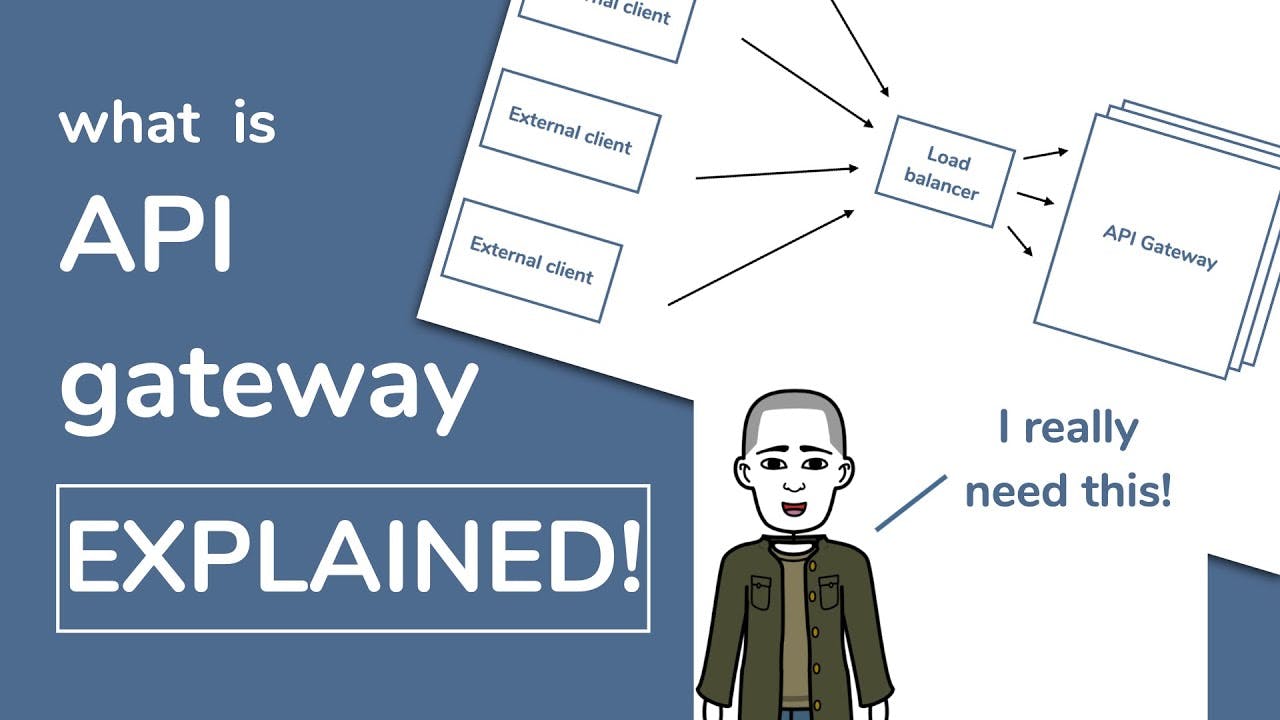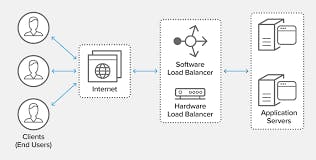Table of contents
- What is an API Gateway?
- 1. Simplify client interaction
- 2. Security
- 3. Rate limiting
- 4. Caching
- 5. Service composition
- What is a Load Balancer?
- 1. Improve scalability
- 2. Improve availability
- 3. Improve performance
- 4. Handle different types of traffic
- 5. Facilitate rolling updates
- Differences between API Gateway and Load Balancer
- Conclusion:
Microservices architecture has been gaining popularity over the last few years. It is a modern approach to building software applications that help to break down a large monolithic system into smaller, independent services that can be developed, deployed, and scaled independently. However, this approach comes with its own set of challenges, one of which is managing the network traffic between the microservices. This is where API Gateway and Load Balancer come into the picture.
Hello everyone! One of the frequently asked interview questions for experienced Java developers in telephonic or face-to-face rounds is the difference between API Gateway and Load Balancer in Microservices.
API Gateway and Load Balancer are two critical components in microservices architecture that help to manage network traffic and ensure scalability, reliability, and high availability of the system. However, there are significant differences between these two components, and understanding them is essential for building a successful microservices architecture.
In this article, I will discuss the differences between API Gateway and Load Balancer in Microservices architecture.
What is an API Gateway?

API Gateway is a central entry point for all external requests to the microservices. It acts as a reverse proxy and handles all the requests and responses between the client and the microservices. API Gateway also performs other functions like authentication, authorization, rate limiting, and caching.
API Gateway acts as a single entry point for all the microservices, which simplifies the client's interaction with the system. It also provides a consistent interface for all the microservices, which makes it easier to maintain and evolve the system.
When to use API Gateway?
API Gateway is a critical component in microservices architecture that acts as a central entry point for all external requests. It provides a consistent interface for all the microservices, which simplifies the client's interaction with the system. API Gateway also performs other functions like authentication, authorization, rate limiting, and caching.
Here are some scenarios where you should use an API Gateway:
1. Simplify client interaction
API Gateway provides a consistent interface for all the microservices, which makes it easier for the clients to interact with the system. It abstracts the complexity of the underlying microservices and provides a simplified interface for the clients. This makes it easier to maintain and evolve the system.
2. Security
API Gateway provides authentication and authorization mechanisms to secure the system against unauthorized access. It acts as a single entry point for all the external requests and can perform security checks before forwarding the requests to the microservices. This makes it easier to secure the system against attacks like SQL injection, cross-site scripting, and cross-site request forgery.
3. Rate limiting
API Gateway can perform rate limiting to prevent the system from being overwhelmed by too many requests. It can limit the number of requests per second or per minute for each client, which helps to ensure the system's availability and performance.
4. Caching
API Gateway can perform caching of responses to improve the system's performance by reducing the number of requests to the microservices. It can cache the responses for a certain period or based on certain criteria like the request's URL, query parameters, or headers. This helps to reduce the load on the microservices and improve the system's scalability.
5. Service composition
API Gateway can perform service composition, which involves aggregating data from multiple microservices into a single response. This helps to reduce the number of requests that the client needs to make to the system and provides a simplified interface for the client.
What is a Load Balancer?

A Load Balancer is a component that distributes the incoming network traffic across multiple instances of the same microservice. Load Balancers ensure that the network traffic is evenly distributed across all the instances, which helps to improve the scalability, availability, and reliability of the system.
Load Balancers can be either software-based or hardware-based. They work by monitoring the traffic and redirecting the requests to the available instances of the microservice. If an instance fails, the Load Balancer automatically redirects the traffic to the other available instances.
When to use load balancer in Microservices?
Load balancers are an essential component in microservices architecture that helps to distribute traffic evenly across multiple microservices instances. Here are some scenarios where you should use a load balancer in microservices:
1. Improve scalability
Load balancers make it easier to add or remove microservices instances dynamically, which helps to scale the system horizontally. As the load on the system increases, load balancers can distribute the traffic evenly across multiple instances, allowing the system to handle more requests and improve its scalability.
2. Improve availability
Load balancers can detect failures in a microservices instance and redirect the traffic to healthy instances, ensuring that the system is always available. This helps to minimize downtime and provide a better user experience.
3. Improve performance
Load balancers can distribute traffic based on different algorithms like round-robin, least connections, or IP hash, which helps to improve the system's performance. By distributing the traffic evenly across multiple instances, load balancers can reduce response times, improve throughput, and provide a better user experience.
4. Handle different types of traffic
Load balancers can handle different types of traffic, including HTTP, HTTPS, TCP, UDP, and other network protocols. This makes it easier to deploy microservices that handle different types of requests and ensure that each request is routed to the appropriate microservice instance.
5. Facilitate rolling updates
Load balancers can facilitate rolling updates by redirecting the traffic from the old version of a microservice to the new version gradually. This helps to minimize downtime, avoid service disruptions, and provide a seamless experience for the users.
Differences between API Gateway and Load Balancer
Functionality
API Gateway and Load Balancer serve different functions in the microservices architecture. API Gateway is a central entry point for all external requests, whereas Load Balancer distributes the network traffic across multiple instances of the same microservice.
Client Interaction
API Gateway provides a consistent interface for all the microservices, which makes it easier for the clients to interact with the system. In contrast, Load Balancer is transparent to the clients, and they are not aware of the instances of the microservices.
Routing
API Gateway is responsible for routing the requests to the appropriate microservice based on the request's content or metadata. Load Balancer, on the other hand, distributes the traffic based on predefined rules, such as round-robin or least connections.
Security
API Gateway provides authentication and authorization mechanisms to secure the system against unauthorized access. Load Balancer, on the other hand, does not provide any security mechanisms and relies on the microservices to handle security.
Caching
API Gateway can perform caching of responses to improve the system's performance by reducing the number of requests to the microservices. Load Balancer, on the other hand, does not perform any caching.
Conclusion:
In conclusion, both API Gateway and Load Balancer are essential components of microservices architecture, but they serve different purposes. API Gateway provides a single entry point for all external requests, while Load Balancer distributes network traffic across multiple instances of the same microservice.
API Gateway performs tasks like routing, security, and caching, while Load Balancer only focuses on traffic distribution. Choosing the right component for the right task is crucial for building a successful microservices architecture, and understanding the differences between API Gateway and Load Balancer is essential in making the right choice.
